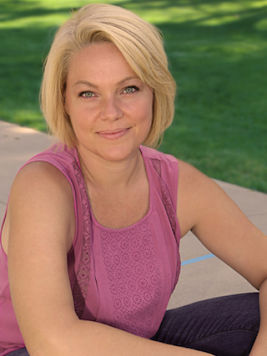The Space Between the Stars
My daughter, Angie, splashes in the swimming pool one minute, then jumps into the hot tub the next minute, at our rented beach house in Kea’au, a tiny town on the eastern side of Hawaii’s Big Island. Afternoon clouds break as she goes from one extreme to the other, sending herself into alternating fits of giggles and shivers. Beyond her, past a row of towering palms, lies the mighty Pacific Ocean, still roiling from a passing storm. Giant waves pound the jet-black lava rocks, fierce and curling, like a temper.
From this distance, I can hear the ocean’s relentless rumble, feel each wave in my chest like the after-boom of fireworks. I can also scan the horizon for signs of trouble. In 1946, a tsunami hit this part of the island, killing 159 people. Among the dead were twenty schoolchildren—all second-graders, just like my daughter.
But here on the island, we sit at the mouth of an angry sea, its churlish tongue lashing at the edges of the land.
That day in 1946, the wave hit just before 7 a.m., about the time Angie would normally be eating her scrambled eggs and drinking her chocolate milk at the kitchen table. I’m usually on my second cup of coffee by then, ready to swap pajama-bottoms for jeans and walk her to school. We live in Los Angeles, closer to the mountains than the ocean. The mountains have their own dangers: rockslides, wildfires, mountain lions, bears. But here on the island, we sit at the mouth of an angry sea, its churlish tongue lashing at the edges of the land.
And what if I were to see an approaching tsunami? Would there be enough time to react? Time to pull Angie from the pool? Time to alert my husband, James, inside the beach house? Time to jump in our rental car and drive to higher ground? Seventy years ago, the surge took residents by surprise, sending them scrambling for shelter. Those who didn’t find refuge in time were swept out to sea. Homes were destroyed. Buildings were ruined. Children were missing.
My child is safe. My child is secure. This is my mantra, recited daily whether she’s in school or at a friend’s house or climbing on the jungle gym at the park. The words are a balm, of sorts, for the constant worry that something bad is going to happen to my family. But she is fine. See? There she is on the deck, happy and healthy, hopping from the cold pool to the steaming tub, feeling one extreme and then another on her ivory skin.
* * *
My husband wanted to go to Costa Rica. Ten days in the rainforest, he said. Ziplining, snorkeling, trekking through jungles, swimming under waterfalls. Instead, my mind flashed to jaguars, monkeys and poisonous snakes, to vaccinations and passports and civil unrest in neighboring countries.
How about Hawaii? I suggested.
Sure, he said. Find a place to rent. Something on the water.
We chose the east side of the Big Island, mostly for its verdant landscape and lack of tourists—the perfect place to celebrate Christmas and our first wedding anniversary. For days, I searched online and over the phone, looking for a place for the three of us to stay. But with only three weeks to go before the holiday, everything was either booked or too expensive. I wondered if I’d have to face the wilds of Central America.
Eventually, though, I found the beach house in Kea’au, just south of Hilo. It promised quietude and privacy, two things lacking in suburban LA. I paid the deposit and exchanged email messages with the owner, who sent along photographs of coconuts and pineapples growing in the yard, of hibiscuses and bromeliads lining the walkway, of the setting sun glowing warm and orange over the water.
With my internet search focused entirely on rental properties, I overlooked an important fact: the Big Island is home to three active volcanoes, including one currently in a state of eruption. Videos from Hawaiian television stations showed lava flowing from Mt. Kilauea toward the remote village of Pahoa. Residents were evacuating. A handful of homes had already burned. All of this was happening eleven miles from Kea’au, our tropical island retreat, our safe alternative to Costa Rica. I wanted to cancel, but the plane tickets were already booked. The rental deposit had already been paid.
In the days leading up to our vacation, I lost sight of the bromeliads. I forgot about the radiant sky and the abundant fruit. Instead, I lay awake in the night thinking about Hilo, the foggy coastal town prone to tsunamis, and Pahoa, the tiny village in the path of an erupting volcano. I thought of riptides pulling my child out to sea, of storm waves flooding our beach house, of red-hot liquid rock blocking the only road out of town.
* * *
When I was a child, maybe six or seven, I told my mother something bad was going to happen. I didn’t know what, and I didn’t know when, but something terrible was waiting, like an animal ready to pounce. Now, as an adult, I wonder where that feeling came from. Was it inherited from my father, who unplugged the toaster and the television whenever we left the house? Or was it more pragmatic? In my hometown in rural western Maine, terrible things happened all the time. Cars veered off snowy roadways. Parents lost their jobs. Trailer homes burned down, sometimes even on Christmas Day. In our own trailer, which rested on blocks at the end of a dead-end street, Dad sometimes lost his temper. After his shift at the local shoe factory, he came home chatty or surly, depending on how many beers he’d had. Any little thing—unfolded laundry or a bicycle left in the driveway—could set him off. I learned how to be on guard, ready for anything.
* * *
The first newspaper story I ever wrote as a journalist was about death. It was August 1997, and the car carrying Princess Diana had just crashed into a tunnel wall in Paris. Her passing was sudden and grisly, and despite the geographical distance, it left people in the United States reeling. My assignment that day was to interview locals who were stricken by the loss, even though they had never actually met the princess.
After the story made page one, my reporting career comprised a slew of personal and national tragedies: fires, murders, assaults, even a kidnapping. Some of the incidents were high profile, like the crash of John F. Kennedy Jr.’s plane off Martha’s Vineyard or the 9/11 terrorist attacks in New York City. But most were regular people doing regular things. A Marine carjacked on his way home from boot camp. A nine-year-old boy with terminal cancer. A woman who lost her job and her lover after contracting Lyme disease. I listened to their experiences and wrote their stories, all the while wondering whether they had sensed something bad was going to happen. Had they felt dread or a sense of impending danger? Or had they been completely blind-sided, thrown off track by something too terrible to even imagine?
Sometimes after deadline, I’d sit in my car in the employee parking lot and crumble beneath the weight of their despair. I’d cry for them and for myself, because if something terrible could happen to such nice people, then something terrible could also happen to me.
* * *
When my daughter was born in 2006, I gave up news writing to focus on raising her in a world where good things happen, not just bad. By then, though, the damage was done. I saw trouble everywhere. My baby’s leg could get caught in the swing set. The blanket in her crib could smother her in the night. She might choke on a Cheerio or tumble down the stairs. Then what would I do?
That year, during the divorce, I had my first panic attack. As I stood at the kitchen counter slicing cheese for Angie’s lunch, a dark wave moved over me.
Her father, my first husband, worked as a boat driver, and when he went to work each morning, I worried he might fall off the vessel and drown. I imagined all the widows I’d met over the years, all the children whose fathers died in the World Trade Center, who had heart attacks at work or were killed in Iraq. I made urgent prayers. Please don’t let anything bad happen to my family. I crossed my fingers. I begged him to be careful. But in the end, it didn’t matter. Something bad happened anyway, only it wasn’t the thing I’d thought it would be. Instead of falling off the boat, he fell in love with another woman.
That year, during the divorce, I had my first panic attack. As I stood at the kitchen counter slicing cheese for Angie’s lunch, a dark wave moved over me. It seemed like I was going to die, not because I wanted to—I didn’t—but because everything in my body was happening too quickly. My heart slammed inside my chest. My skin felt hot and prickly, like electricity. My vision blurred. My hands trembled. Then, as suddenly as the feeling came, it stopped. I told the doctor it was a heart attack. She said it was anxiety.
* * *
On our first evening in Kea’au, instead of joining Angie and James on the deck to watch the stars, I search the house for anything that could potentially hurt my daughter: sharp knives in kitchen drawers, glassware on high shelves, electrical wires lying loose along the floorboards. Like LA, Hawaii is prone to earthquakes, and if something is going to fall during a jolt, I want to be ready for it. If I’m ready, then we’ll be safe.
Even as I go from room to room, restless and hyper-vigilant, the absurdity of the situation is clear to me: here I am, in a tropical island utopia, searching for things to worry about. I should be outside counting stars, but instead, I am relocating ashtrays, checking locks on windows and doors, and pushing Angie’s bed against the wall so she won’t roll out in her sleep.
When everything seems secure, I call Angie in from the deck, tuck her into bed and lie with her until she falls asleep. Outside, waves crash. The night darkens. Palm branches brush the tile roof, and coqui frogs chant their high-pitched calls. Ko-kee. Ko-kee. Everything is beautiful. Everything is scary.
* * *
The next day, strong winds blow from the west as the three of us sit by the pool playing Uno. Hurricanes are rare in Hawaii, but still, I wonder about the possibility. As Angie lays her card on the pile, a coconut frond the size of a bicycle crashes down onto the deck, just a few feet from where we sit. The clatter sends a clench to the center of my chest.
James and I have been married only a year, but he knows when I am uneasy. He sees me grip the seat belt when we drive along twisty mountain roads. He watches my hesitation when I’m about to try something new. He doesn’t always understand the origin of my anxiety or grasp how deeply it affects me, but he stays composed and logical, a welcome antidote to my agitation.
For a moment, nobody moves. But then James sets down his cards, walks to the frond in the yard and lifts it up over the fence, out of sight but not entirely out of mind. When we resume our game, Angie plays a red skip card, meaning I lose my turn. James studies his hand, and I wonder if the wind will get stronger, if more branches will fall. When my turn comes back around, I lay a blue seven, hoping it’s lucky.
* * *
After the weather improves, we go to a beach park in Hilo. There are no sandy beaches here, just rocky ledges and inlets. A breakwater protects the cove from pounding surf, but there is still a strong current and a rising tide. We lay our things on the rocks and make our way down to the water. James and Angie jump in right away, but I perch at the edge, dipping one foot and then the other.
Back on the rocks, a young man in a baseball cap sits next to our things. He is fully dressed, no swimsuit, with earbuds and a cellphone. Another man in the same attire stands on the street near our rental car. The agency gave us a red Mustang convertible—a virtual neon sign advertising our tourist status. The men make me nervous. I’ve read about pickpockets and thieves at Hawaiian beaches, how coordinated and covert they are with their hits. If these guys take our stuff, we’ll be stranded. No phone to call for help. No money for a cab back to the beach house. No identification to fly home.
I scramble back up the rocks to retrieve our things, then keep watch while James and Angie finish their swim. There is trouble everywhere, all the time. But if I’m vigilant enough, if I worry just right, I can save us.
* * *
Midway through our vacation, we drive to an abandoned transfer station on Apa’a Street in Pahoa to see the lava flow from Kilauea, which has been erupting off and on for thirty years. On Hawaii, lava is part of life, and locals have learned to live with it. When molten rock threatened their homes and their school, when it closed the highway, the people of Pahoa worked around it. They moved in with friends, relocated the schoolchildren, and built a bypass.
Because visitors are curious about the flow, county officials set up this viewing station, marked by ropes and metal fencing. The fencing is melted in spots where the molten rock advanced, then cooled into thick black slabs. The air is warm and slightly sulfurous, as small, scattered plumes of smoke still rise over the hardened landscape. Spectators are quiet and still, humbled by the sight of what nature can do.
Along the ropes lay piles of coins, fruits and colorful flowers—a stark contrast to the hard, black lava-rock. These are gifts, or makana, left behind to appease Pele, the goddess of volcanoes. Angie and I leave the only things we have in our pockets: two pennies and a piece of spearmint gum wrapped in silver paper—a modest appeasement for the deity of destruction and regeneration.
* * *
After the divorce, my panic attacks subsided. A general nervousness remained, though, as Angie and I restarted our lives. I rented an apartment, put her in daycare for the first time, and juggled part-time jobs. We spent our evenings on the living room rug, playing with blocks and reading books. Tumble Bumble and Goodnight Moon. When things got lonely, when life felt insurmountable, we finger-painted at the kitchen table and went for long walks through our small, quiet town.
When trouble comes, you can learn to live with it. You can build a road or make a bridge and find another way around. Or you can stand at the foot of what scares you the most, watching sulfur rise from the ashes, knowing you can rise too.
After two years on our own, Angie and I packed our things and got on a plane bound for southern California. She went to kindergarten and I went to graduate school, thanks to a scholarship from an organization that supports journalists. When we met James, I waited for something bad to happen, for him to reveal himself as untrustworthy or unpredictable. I waited and waited, but only good things happened. Card games and movie nights. Trips to the zoo. Christmases and birthday celebrations. Eventually he and I married, high on a mountain overlooking LA, the sky clear enough to see all the way to the Pacific.
* * *
One morning, we wade into a manmade lagoon in Waikoloa Village, on the west side of the island. The water is salty and clear, and we can see down to our feet. Tiny swimmers dart left and right. Saddle wrasses, triggerfish, small scurrying crabs. The lagoon is ocean-fed, meaning any creature that wishes may make its way inside. An octopus, perhaps. A jellyfish or a barracuda. I worry Angie will step on a sea urchin or bump into an eel. I keep a close eye on her, trailing as she explores the shallows.
I want to pull them back, set them both down on the beach where it’s safer, but instead I follow. I follow because if something bad is going to happen, I want to be there to help.
Then James urges her deeper, toward the middle of the lagoon. He is more adventuresome than I am, with no compulsion for constant watchfulness. He takes Angie’s hand and moves her through the water slowly, gauging my level of nervousness. I want to pull them back, set them both down on the beach where it’s safer, but instead I follow. I follow because if something bad is going to happen, I want to be there to help.
As the current swirls around our bellies, then our shoulders, the water gets a bit murkier. Still, we see schools of brightly colored fish. Orange, yellow, blue and green. They swim between our legs and around in circles, shining like sequins in the sun’s refracted light. It’s like being inside a kaleidoscope.
Then, in the distance, a large shadow appears. It moves toward us, slowly—so slowly that for a moment I wonder if it’s moving at all. No one speaks. I imagine a shark or a dolphin, maybe some kind of ray. I glance back at the beach, wondering if we have enough time to make it back to the shore. I reach for Angie’s hand, readying myself for whatever is going to happen next, as James adjusts his goggles and dips his head beneath the surface.
It’s just a turtle, he says.
Green sea turtles, or honu, are common around the island. Locals refer to them as great navigators because they travel hundreds of miles to lay eggs in their original birthplaces. In local folklore, they are considered good-luck symbols of a guardian spirit. In one story, a turtle named Kauila turns into a girl and watches over the other children playing along the shoreline.
My instinct, though, is to pull my daughter back and keep her away. Adult honu weigh two hundred pounds, sometimes more. The sight of the creature gliding toward us makes my muscles tighten, makes my chest hurt. It looks otherworldly and grumpy, a permanent scowl on its old-man face.
Before I can grab Angie, she lifts her feet away from the sandy bottom and paddles toward the animal. In a flash, they are swimming alongside one another. Sunbeams gleam into the water, illuminating the turtle’s marbled shell and my child’s golden-brown hair. She looks mystical, angelic.
Without thinking, I lift my feet away too, unclenching for the first time during our vacation. My body dips beneath the surface, where sunlight glistens through salt water. I grab my daughter’s hand and glide with her, awestruck by the incredible lightness in my own body. For once, there is no tightness in my chest. There is no dread or foreboding. We are underwater with a giant turtle, and for an instant, nothing else exists.
* * *
On our final day in Hawaii, we walk the streets of downtown Hilo, stopping for burgers at one place, ice cream cones at another. We peek inside an art gallery, wander a bookstore, and watch a barefoot man play ukulele on the corner. Along the roadways, blue-and-white signs mark the official tsunami evacuation route, another reminder of the ever-present potential for disaster.
After the destruction of the 1946 swell, Hilo officials redesigned the city’s infrastructure and buildings. They planted trees and set up a buffer zone between the shoreline and the business district. They built a seawall, raised the highway, and implemented a new tsunami warning system with sirens. When another wave hit in 1960, sixty-one residents died, despite all the city’s precautions.
* * *
That night, I tuck Angie into bed and slip outside to join James in a lounge chair on the deck. Strong winds are moving over the island again, pushing clouds across our field of vision. It’s chaotic and scary, but also exciting. Waves are slamming the shoreline. Palms are bending in the breeze, their fronds rustling in a wild crescendo. Now and then, we hear one snap, hear it tumble to the ground somewhere in the darkness around us.
As the storm pushes the clouds away, the stars come into sight—a few at first and then hundreds, maybe thousands, shimmering inside our sphere of uncertainty.
It takes all the strength I have not to run back inside and check on my daughter, to make sure she is okay and the noises haven’t startled her. What keeps me in my chair, though, is the night sky, how blue it is, how deep and eternal. As the storm pushes the clouds away, the stars come into sight—a few at first and then hundreds, maybe thousands, shimmering inside our sphere of uncertainty.
Anything can happen, at any time and in any place. A tectonic plate could shift in Chile or the Aleutian Islands, triggering an earthquake or a volcano or seismic wave in Hilo or Sumatra. Uncertainty is the natural state of our world. It’s what makes everything scary. It’s what makes everything beautiful.
I can’t stop bad things from happening, but maybe I can see my fear for what it is: the memory of disasters gone by. When I feel nervous, when I feel dread, I can hold the black wave in my chest, feel it swirl and churn. Then maybe I can let it go, just a bit, so I won’t miss the bright moments. So much lies in the blank space between stars. I am learning to navigate the darkness.
And if that’s what my anxiety truly is, the consciousness of prior catastrophe, then isn’t that also what stars are—celestial bodies that existed long ago, that exploded when I wasn’t paying attention, when I was sleeping or eating or worrying about something else? Aren’t they also memories of a different sort, still sending their light, showing me that the world, however frightening, is also divine?
I reach for my husband’s hand as even more stars appear, closing the distance between one bright spot and the next.
 Wendy Fontaine is a Pushcart-nominated writer whose work has appeared in Hippocampus, Passages North, Readers Digest, Literary Mama, Brain Child, Role Reboot, and elsewhere. In 2015, she won the Tiferet Prize for creative nonfiction. She teaches creative writing and journalism, lives in Los Angeles, and is currently seeking representation for her memoir, Leaves in the Fall. Follow her on Twitter @wendymfontaine
Wendy Fontaine is a Pushcart-nominated writer whose work has appeared in Hippocampus, Passages North, Readers Digest, Literary Mama, Brain Child, Role Reboot, and elsewhere. In 2015, she won the Tiferet Prize for creative nonfiction. She teaches creative writing and journalism, lives in Los Angeles, and is currently seeking representation for her memoir, Leaves in the Fall. Follow her on Twitter @wendymfontaine
Photo by Ali Dubin Photography





